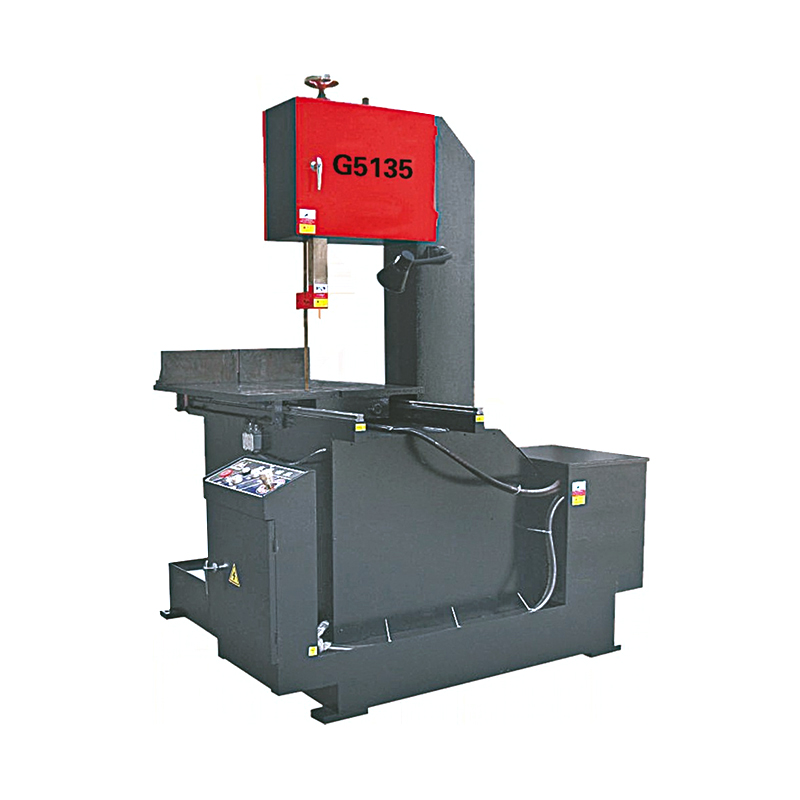What Are the Key Differences Between Various Types of Sawing Equipment?
In the metalworking and fabrication industries, the right sawing equipment can make all the difference in terms of efficiency, precision, and overall quality of work. With a variety of sawing machines available, each designed for specific tasks and materials, it's essential to understand the key differences between them to make informed decisions for your workshop.
Metal cutting band saw machines are renowned for their versatility and ability to handle a wide range of materials and cutting tasks. These machines use a continuous loop of metal blade, which provides a smooth and precise cutting action. One of the primary advantages of metal cutting band saw machines is their capacity to cut through thick and heavy materials with ease. This makes them ideal for applications in industries such as construction, automotive, and heavy manufacturing, where large metal pieces need to be accurately cut.

The precision of metal cutting band saw machines is another key feature. These machines can be equipped with advanced blade guides and tensioning systems, ensuring that the blade remains stable and accurate during cutting. This level of precision is crucial for achieving clean, burr-free edges, especially when working with materials like steel, aluminum, and other metals. Additionally, many metal cutting band saw machines come with adjustable cutting speeds, allowing operators to optimize the machine for different materials and thicknesses.
Vertical band saw machines, on the other hand, are designed to offer exceptional precision and control, making them suitable for intricate and detailed cutting tasks. These machines operate with the blade positioned vertically, allowing for precise and accurate cuts. Vertical band saw machines are particularly useful for making complex shapes, curves, and angles, which require a high degree of accuracy and control.
One of the standout features of vertical band saw machines is their ability to handle a variety of materials, from metals to plastics and even wood. This versatility makes them a valuable addition to any workshop, especially for those who work with multiple materials. The vertical orientation of the blade also provides better visibility and control during cutting, reducing the risk of errors and ensuring consistent results.
While both metal cutting band saw machines and vertical band saw machines offer precision and versatility, they are designed for different applications and cutting tasks. Metal cutting band saw machines are typically used for cutting large and heavy materials, where their robust construction and powerful motors can handle the demands of heavy-duty cutting. These machines are often found in industrial settings where efficiency and capacity are critical.
Vertical band saw machines, in contrast, excel in tasks that require intricate and detailed cuts. Their vertical blade orientation and adjustable cutting speeds make them ideal for creating complex shapes and curves, which are often needed in custom fabrication and artistic projects. The precision and control offered by vertical band saw machines make them a preferred choice for workshops that require high-quality, detailed work.
Safety is a top priority in any workshop, and both metal cutting band saw machines and vertical band saw machines come equipped with various safety features. Metal cutting band saw machines often include blade guards, emergency stop buttons, and adjustable cutting guides to protect operators during use. Similarly, vertical band saw machines feature blade guards and safety interlocks that prevent the machine from operating when the guards are open. Regular maintenance is essential for both types of machines to ensure good performance and longevity. This includes cleaning the machine, inspecting the blade for wear, and lubricating moving parts.
When selecting sawing equipment, it's important to consider the specific needs of your workshop. If your primary focus is on cutting large and heavy materials with high efficiency, a metal cutting band saw machine may be choice. These machines offer the power and capacity needed for heavy-duty cutting tasks, ensuring consistent and precise results.

 English
English 中文简体
中文简体 русский
русский

